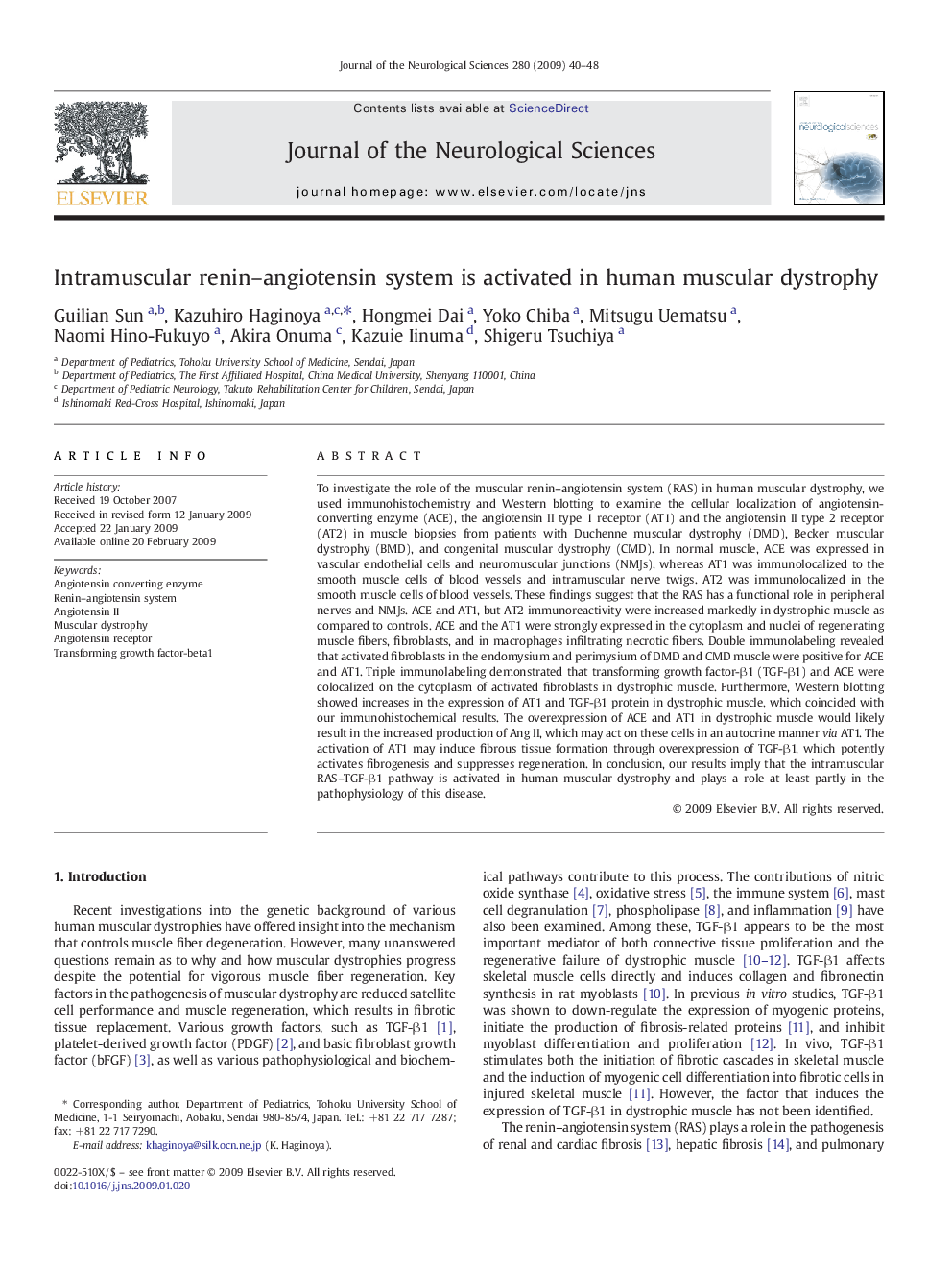| کد مقاله | کد نشریه | سال انتشار | مقاله انگلیسی | نسخه تمام متن |
|---|---|---|---|---|
| 1915149 | 1645461 | 2009 | 9 صفحه PDF | دانلود رایگان |

To investigate the role of the muscular renin–angiotensin system (RAS) in human muscular dystrophy, we used immunohistochemistry and Western blotting to examine the cellular localization of angiotensin-converting enzyme (ACE), the angiotensin II type 1 receptor (AT1) and the angiotensin II type 2 receptor (AT2) in muscle biopsies from patients with Duchenne muscular dystrophy (DMD), Becker muscular dystrophy (BMD), and congenital muscular dystrophy (CMD). In normal muscle, ACE was expressed in vascular endothelial cells and neuromuscular junctions (NMJs), whereas AT1 was immunolocalized to the smooth muscle cells of blood vessels and intramuscular nerve twigs. AT2 was immunolocalized in the smooth muscle cells of blood vessels. These findings suggest that the RAS has a functional role in peripheral nerves and NMJs. ACE and AT1, but AT2 immunoreactivity were increased markedly in dystrophic muscle as compared to controls. ACE and the AT1 were strongly expressed in the cytoplasm and nuclei of regenerating muscle fibers, fibroblasts, and in macrophages infiltrating necrotic fibers. Double immunolabeling revealed that activated fibroblasts in the endomysium and perimysium of DMD and CMD muscle were positive for ACE and AT1. Triple immunolabeling demonstrated that transforming growth factor-β1 (TGF-β1) and ACE were colocalized on the cytoplasm of activated fibroblasts in dystrophic muscle. Furthermore, Western blotting showed increases in the expression of AT1 and TGF-β1 protein in dystrophic muscle, which coincided with our immunohistochemical results. The overexpression of ACE and AT1 in dystrophic muscle would likely result in the increased production of Ang II, which may act on these cells in an autocrine manner via AT1. The activation of AT1 may induce fibrous tissue formation through overexpression of TGF-β1, which potently activates fibrogenesis and suppresses regeneration. In conclusion, our results imply that the intramuscular RAS–TGF-β1 pathway is activated in human muscular dystrophy and plays a role at least partly in the pathophysiology of this disease.
Journal: Journal of the Neurological Sciences - Volume 280, Issues 1–2, 15 May 2009, Pages 40–48